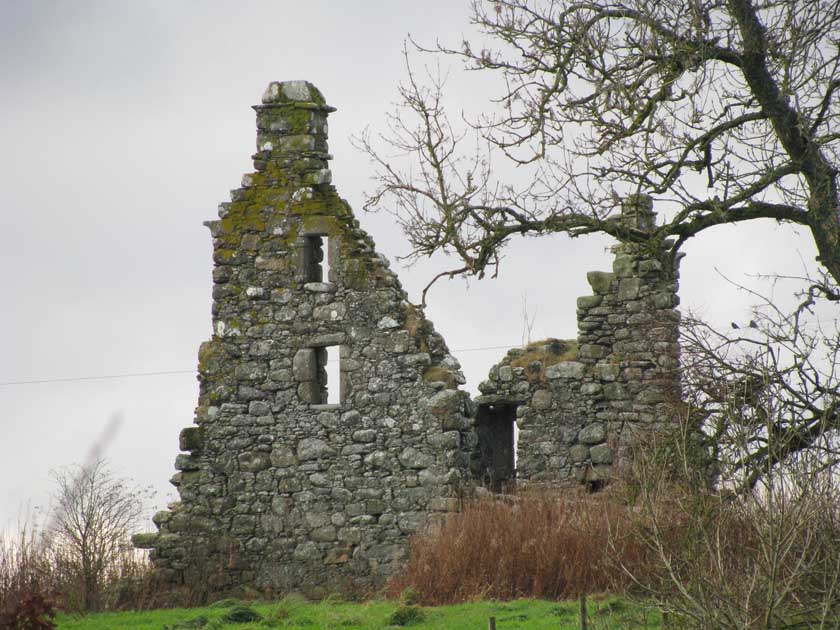Avochie Castle

Avochie Castle Details
Avochie Castle, ruins of unimpressive C16/17 tower house ofteh Gordons abandoned ?C18
- Closest To: Rothiemay, Huntly
- Access: S.O.A.C. Public Access
- Grid Reference: NJ536466
Avochie Castle is an unimpressive ruin that sits in agricultural fields downstream of Huntly along the River Deveron, and overlooks the confluence of that river with the Isla. The ruin consists of a pair of gables which belong to a modest rectangular house, and which at one point was provided with two diagonally opposed corner turrets (NW and SE). An entrance door was at the southern end of the west gable, and there were small fireplaces at each end. Since the building was only two storeys tall with an attic, it is not really representative of a tower house even of the meaner sort, and although it is usually stated to be 17th century, it is still a rather modest structure. There are no shot holes, and there is little in the way of decoration, even where the turrets were.
The first mention of Avochie is when it was granted to Sir William Leslie of Balquhain by Alexander Gordon, Earl of Huntly, after the Battle of Brechin in 1452. In 1588 John Leslie of Balquhain is supposed to have resigned the lands of Avochie allowing John Gordon to receive the lands, but this resignation does not appear in the Historical Records of the Family of Leslie. Nevertheless, Avochie does appear as the designation of John, the second son of James Gordon of Cairnborrow, a grandson of the illegitimate John Gordon of Scurdargue. Cairnborrow was wealthy, and lived at another (completely vanished) building upstream of Huntly, most likely a tower house of sorts. William of Avochie was succeeded by his son James in 1529, and James by a series of Johns, the last of whom died in 1684. This last John had a son, Henry, who rebelled as a Jacobite in 1715, and Henry had a son John, who did the same in 1745, leaving a daughter Ann to inherit the estate with her husband James Hay of Rannas. By the time of General Roy’s map in the mid 18th century, the settlement of Avochie had moved down to the riverside, near where Avochie House lies today, but it was depicted as farther away from the river on earlier maps.
It is questionable whether Avochie should be considered a castle. The current ruin suggests not, but it may be a reworked fragment of an earlier building, or else be in part a folly of sorts. What is interesting, however, is the architectural history of Avochie House, down by the river. The oldest part of this building is a rectangular tower house dated to “the late 17th or early 18th century”, extended in the mid 18th and then again in the 19th century. This suggests the possibility that the old house of Avochie, called Avochie Castle, was damaged during the mid 17th century, when the Gordons were being persecuted for Catholicism – or abandoned. John Gordon of Avochie was one of the principal creditors of George Gordon of Newton, whose finances were so bad that in 1649 Avochie gained the estate of Newton. This John, who was still alive in 1664, may have chosen to erect a new residence down by the river, taking down parts of an earlier house. His son John is the other possible suspect, married in 1670 and with extensive estates. It would be interesting to know whether lost foundations site on the mound that the ruin crowns!
Become a supporter of my work to access a more detailed history